Installing ManageEngine AppCreator
This guide will help you in successfully installing ManageEngine AppCreator on your Windows and Linux machines.
System requirements
| Hardware | Minimum | Recommended |
| Processor | 2.4 GHz or faster, 4 core, x64 bit processor | 3.4 GHz or faster, 8 core, x64 bit processor |
| RAM | 8 GB* | 16 GB* |
| Disk space | 200 GB* | 500 GB* |
* Additional space might be needed based on the increasing number of Apps, Reports, Files, Users, Concurrent Accesses, Workflows, and Schedules.
Recommended web browsers
ManageEngine AppCreator can be accessed using any of the following web browsers:- Google Chrome version 100 or above
- Mozilla Firefox 90 or above
- Safari 14.1.2 or above
- Internet Explorer version 11 or above ( For IE 9 & IE 10 settings should be changed on the customer end to enable TLS1.2 )
* Always use the latest version of the browser for better security and the best possible experience.
Supported DBMS
- PostgreSQL - bundled by default within ManageEngine AppCreator's Windows and Linux installables.
Prerequisites
- Exclude anti-virus scan for the folder where ManageEngine AppCreator is installed (eg. C:/ManageEngine/AppCreator)
- The hostname of the server where ManageEngine AppCreator is to be installed should not contain the underscore ( _ ) symbol in it. The underscore may affect the application startup and make certain services inaccessible on TCP/IP networks. For example, use the server hostname: https://manageengine-appcreator:8443 instead of https://manageengine_appcreator:8443
- The default port used by the application is 8443. 8443 (configurable at the time of installation) is the webserver port, on which the web client will be accessible. This port should be open on your firewall in order to access the application from other workstations on your network.
- AppCreator can be installed on virtual servers. In such cases, Dynamic Resource Balancing should be turned off by configuring Distributed Resource Scheduler (DRS) at the ESX/VMlevel.
Domains to whitelist in firewall
| Domain | Reason | |
| creatorapp.zohopublic.com | Notification banner for security fixes, EOS announcement and new release | Mandatory |
| securitycontact.manageengine.com | To save and update security advisory contact info | Mandatory |
| forms.manageengine.com | For Presales and customer support | Optional |
| maps.zoho.com/maps.zoho.eu | To load maps | Optional |
Inbound and Outbound Port rules
| Inbound | Port |
| Creator app server | 8443 |
| Widget port | This may vary based on the customer's infrastructure setup. |
| Outbound | Port |
| ISMTP | 25, 465, 587 |
| IMAP | 993 |
| Proxy server | This may vary based on the customer's infrastructure setup. |
| Integrations from Creator | This may vary based on the customer's infrastructure setup. |
Prerequisites for Windows:
- If you wish to run the ManageEngine AppCreator batch files on Windows Server 2008, make sure that you have 'Edit' permission for ManageEngine AppCreator folders (even if you are an administrator).
- To run the installation, right-click the installation file and choose the option "Run as administrator".
Prerequisites for Linux:
- Please do not install the application logged in as a root user. Installation should be done as a regular user.
- Ensure that the application is not installed in the root directory.
- Make sure you add the installation path to your antivirus exclusion list before you proceed.
Install ManageEngine AppCreator on Windows
Windows Server: 2016, 2019 & 2022
- Download the required installable for Windows.
- Double click the downloaded file. Click Next in the InstallShield Wizard for ManageEngine AppCreator.
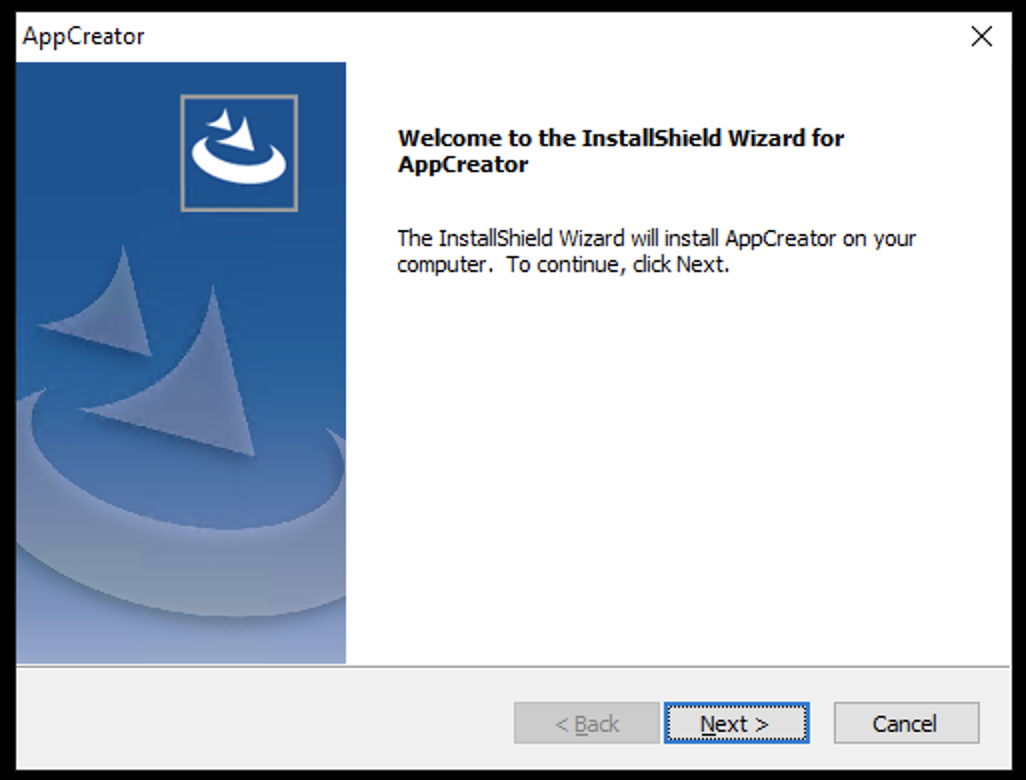
- Read the License Agreement, then click Yes.
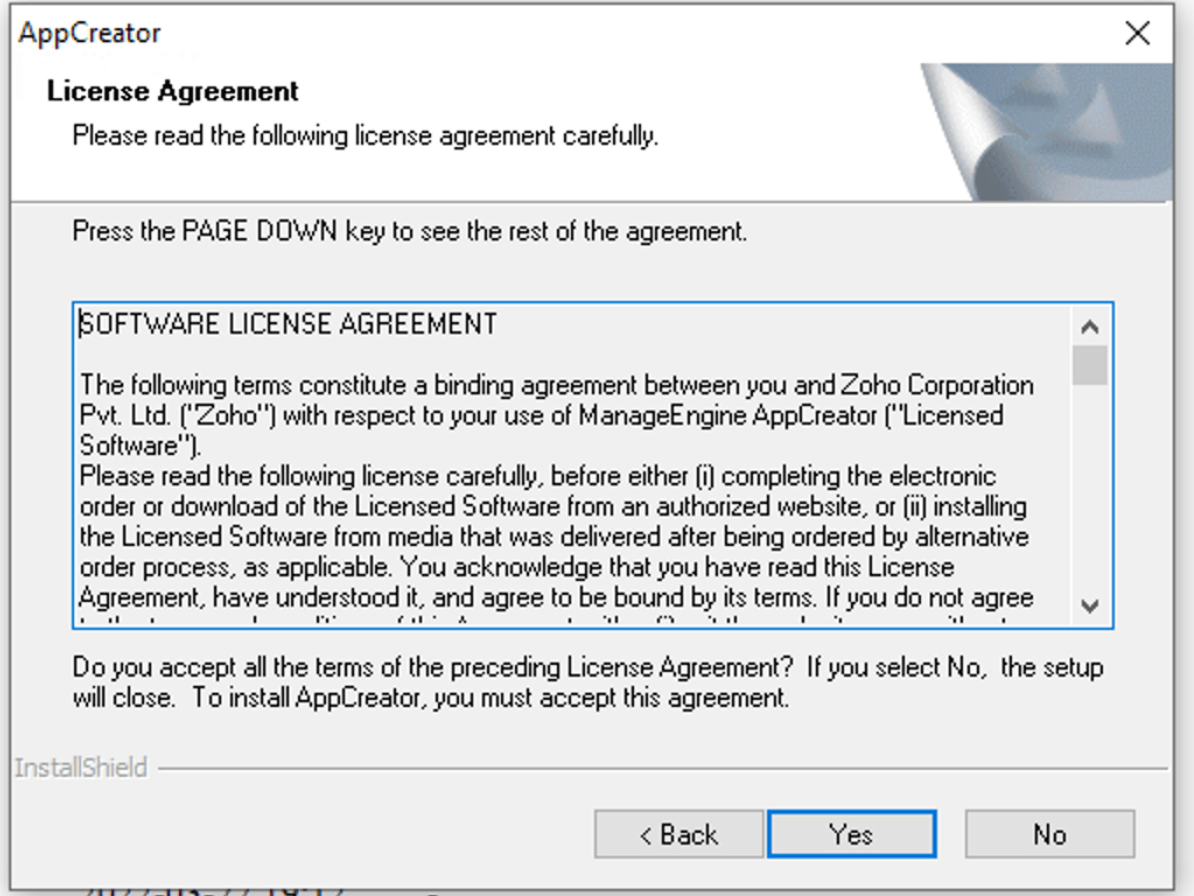
Select the Primary Server radio button in the following screen, and click Next to proceed with the installation process. Upon successful installation, your primary server will be configured.
- Set the Destination Folder, then click Next.
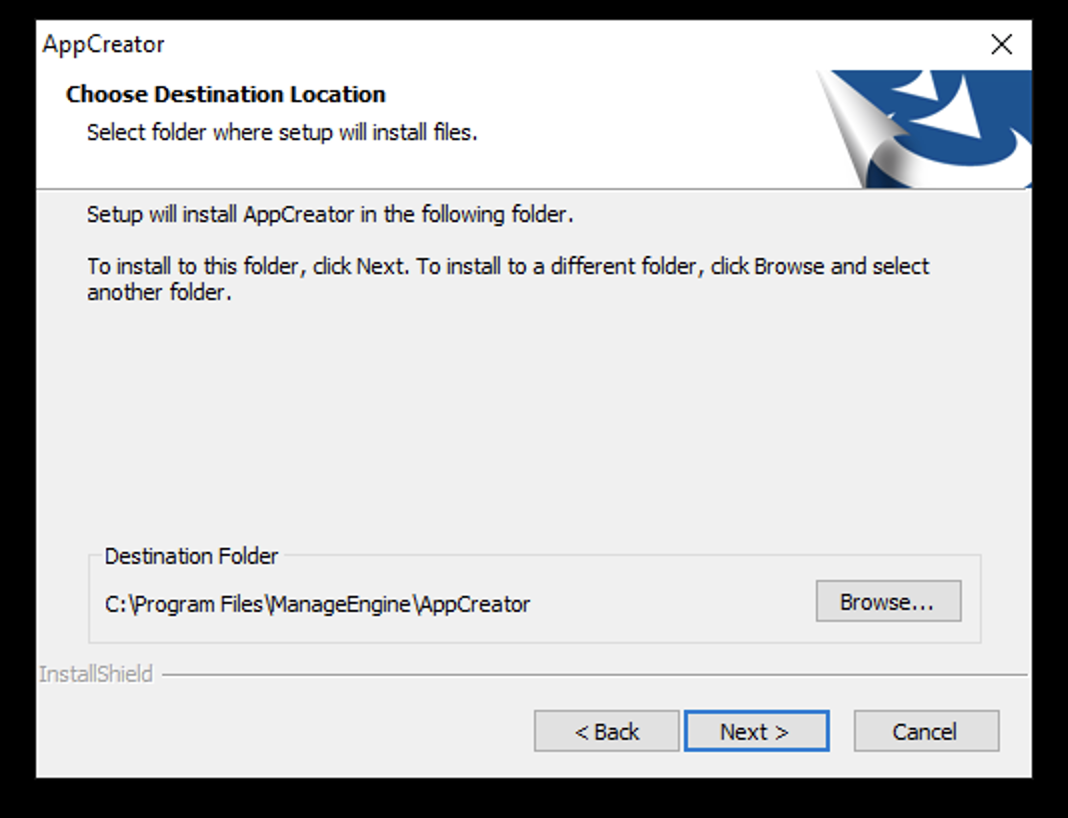
- Set the Web Server Port, then click Next. It'll be set as 8443 by default.
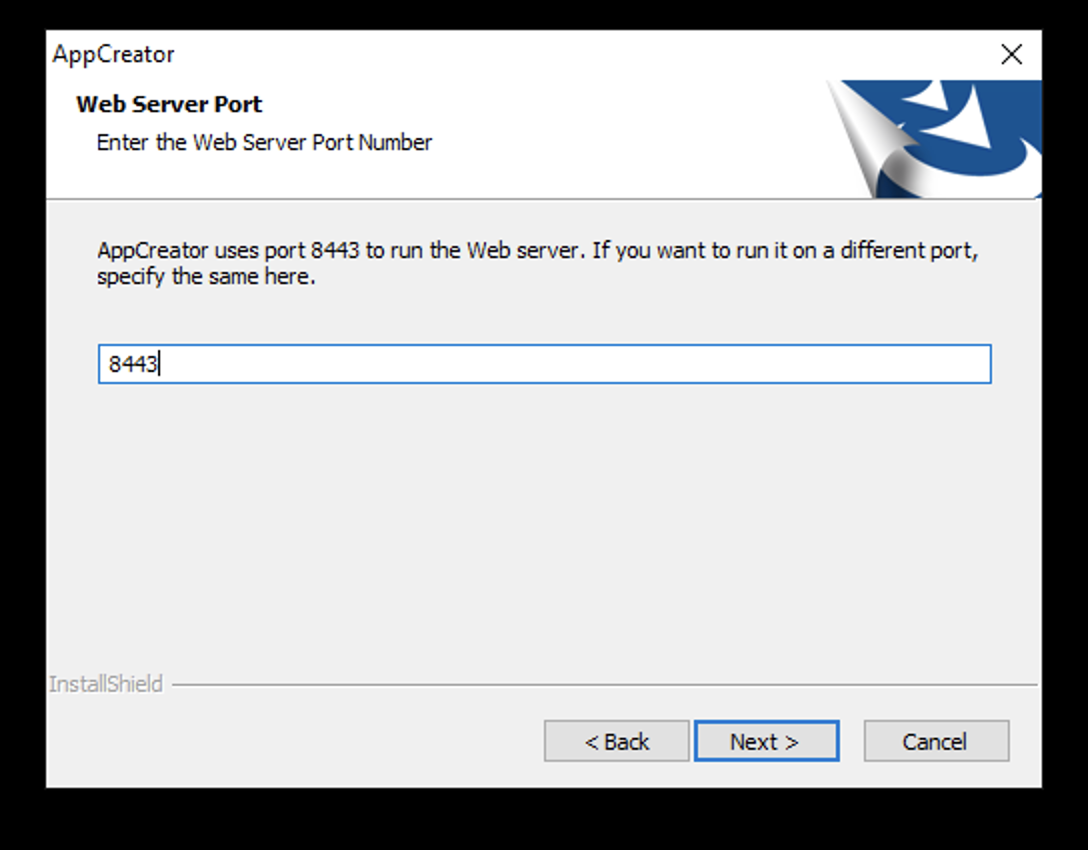
- Enter your details for contacting ManageEngine's technical support.
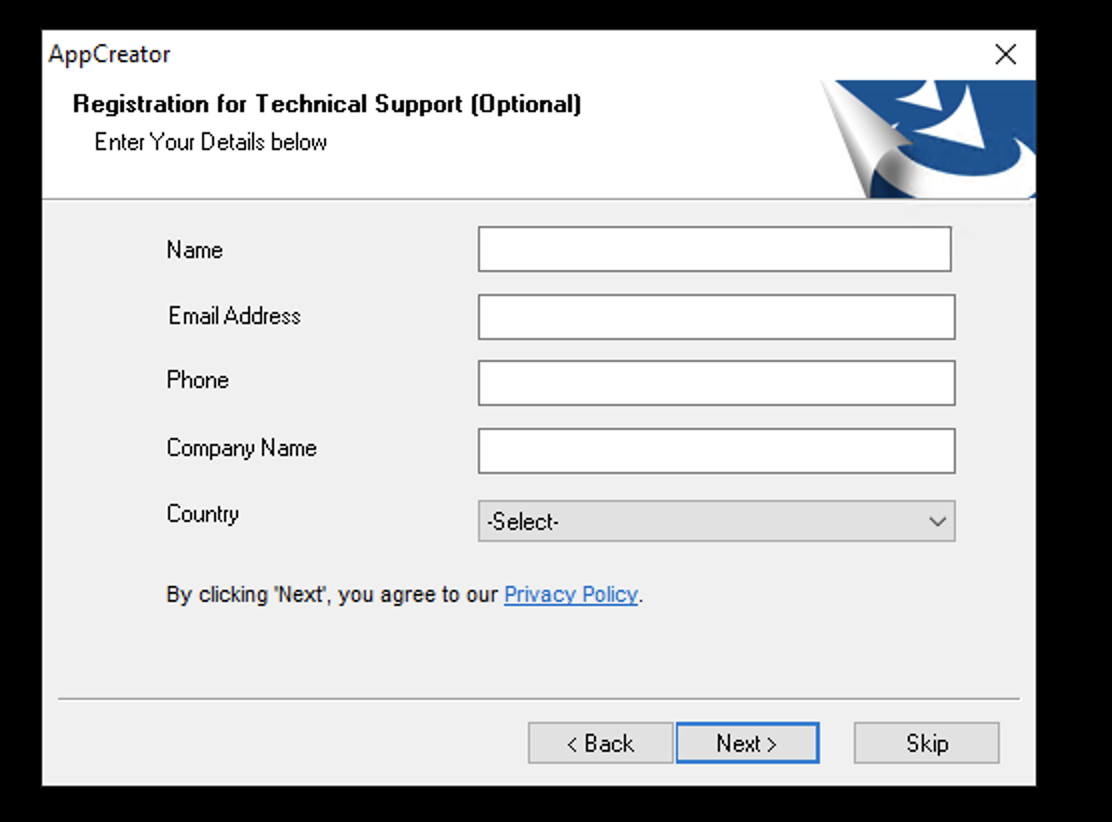
- You'll be prompted to define exceptions for the ManageEngine AppCreator directory from the antivirus scanners.
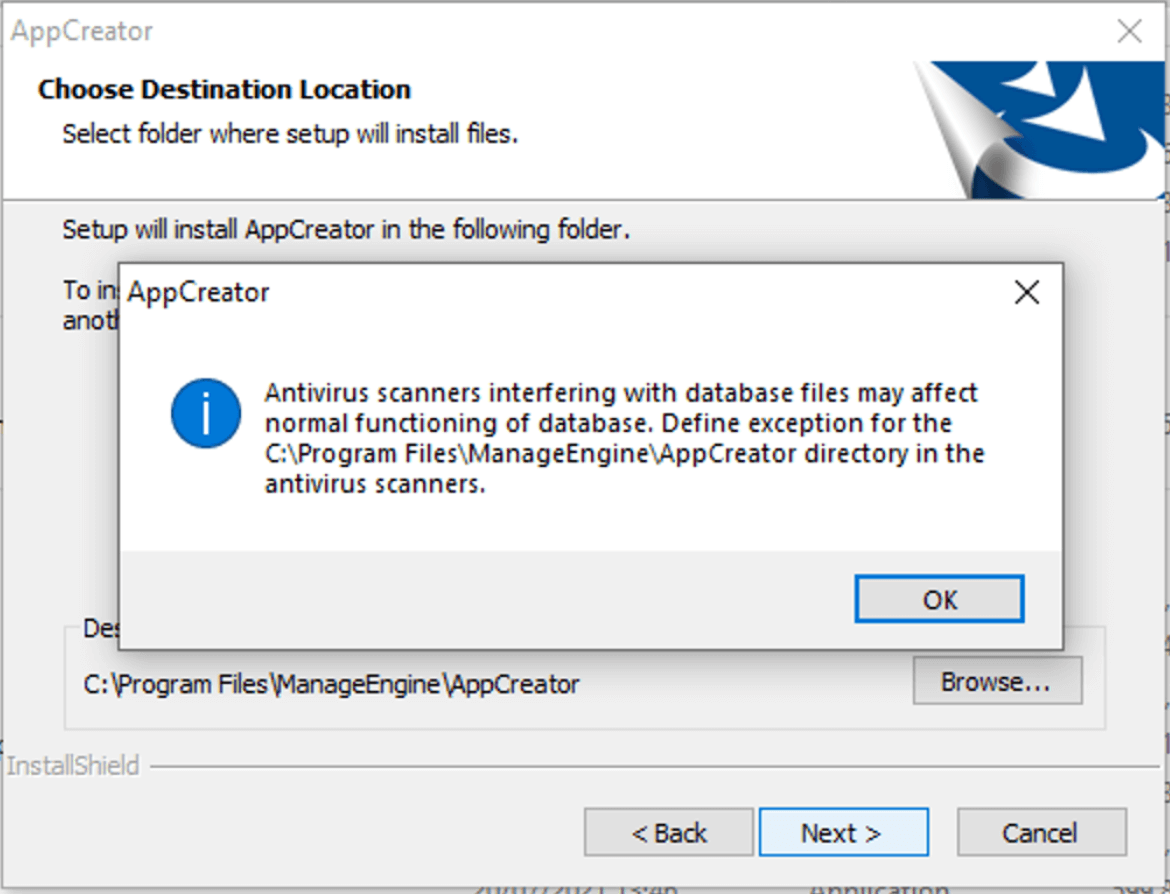
- Review the setup information then click Next.
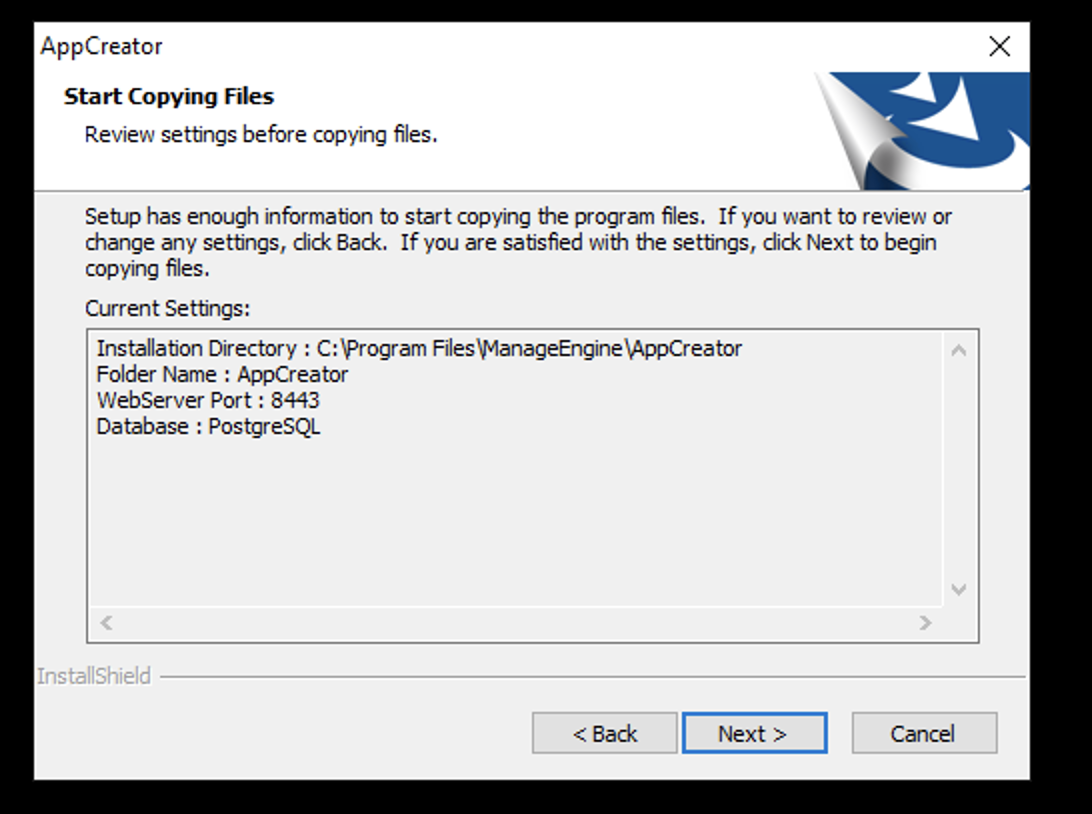
- Click Finish.
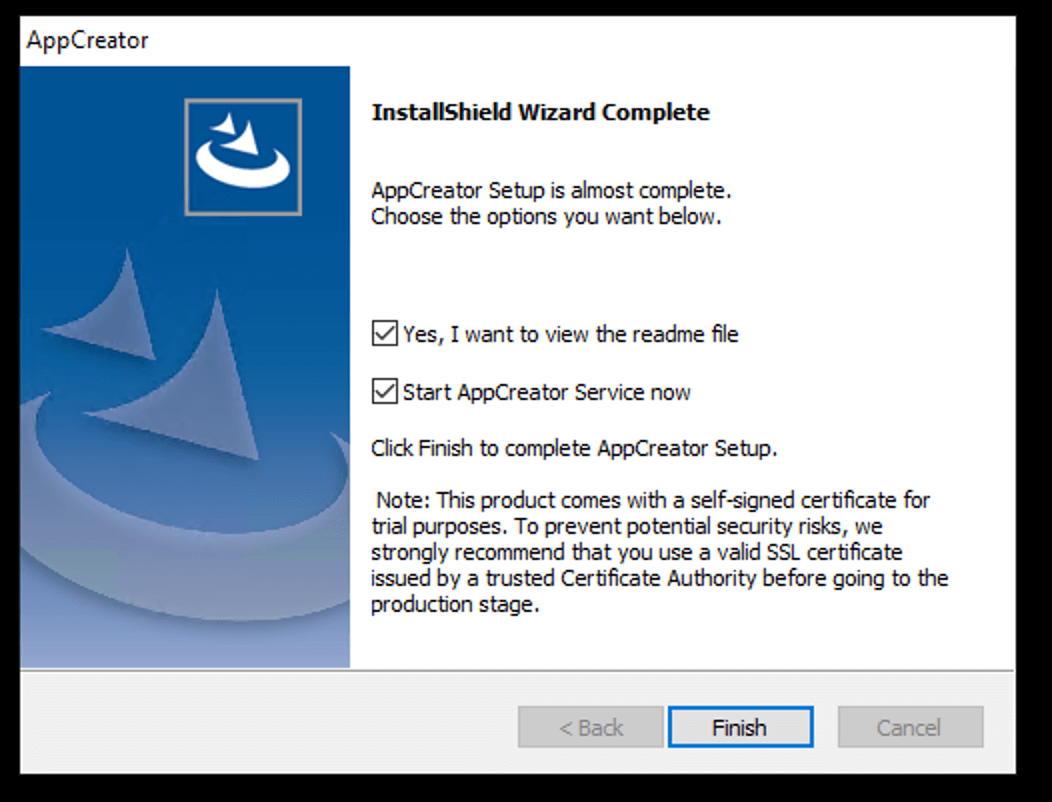
- Once the service starts successfully, the AppCreator login page will open in a browser window. You can log in using the default username/password combination: admin/admin, or admin and the AWS instance ID if you're using AWS. These credentials should be changed after your first login.
- Alternatively, you can start the ManageEngine AppCreator server by following the steps in this page.
After successful installation, we recommend you configure the mail server settings for your account.
Install ManageEngine AppCreator on Linux via GUI
- Download the required installable for Linux.
- Change the access permissions of the installation file using the following command:
chmod a+x ManageEngine_AppCreator.bin
- Execute the installation file using the command:
./ManageEngine_AppCreator.bin
- Click Next in the InstallShield Wizard for ManageEngine AppCreator.
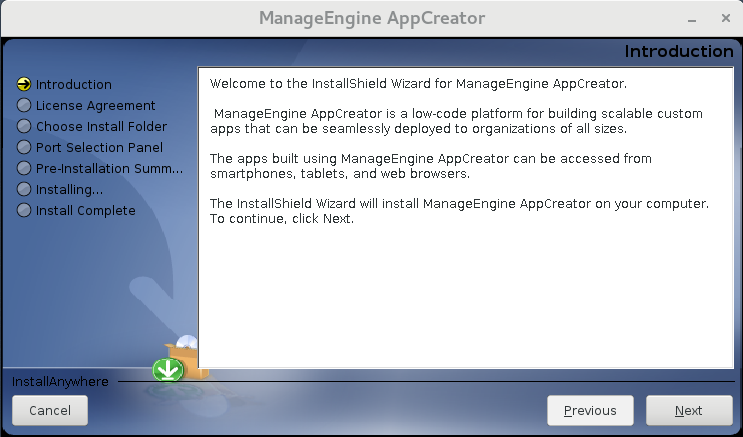
- Accept the terms of the License Agreement, then click Next.
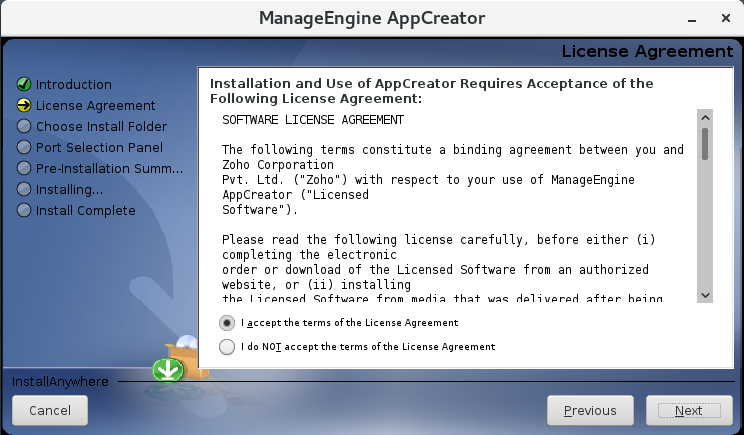
Select the Primary Server radio button in the following screen, and click Next to proceed with the installation process. Upon successful installation, your primary server will be configured.
Set the Installation Folder, then click Next.
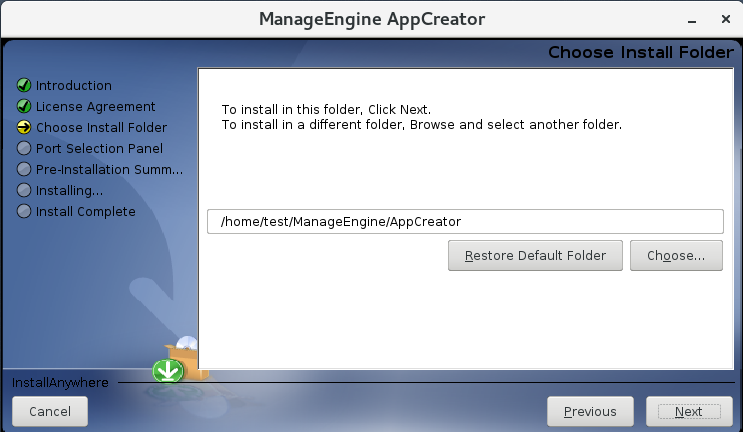
- Set the Web Server Port, then click Next. It'll be set as 8443 by default.
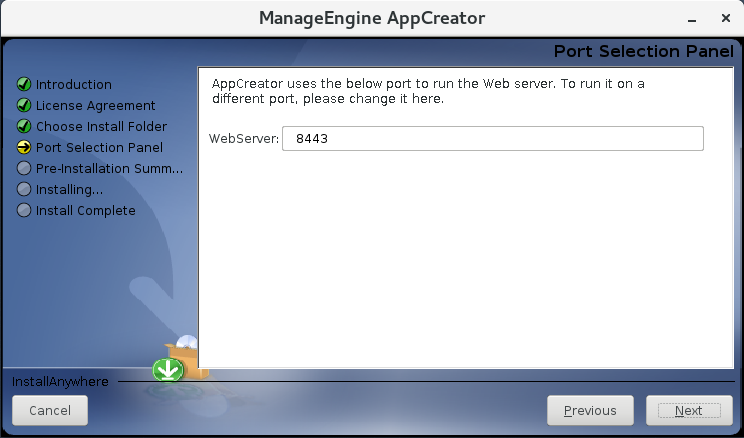
- Enter your details for contacting ManageEngine's technical support, then click Next.
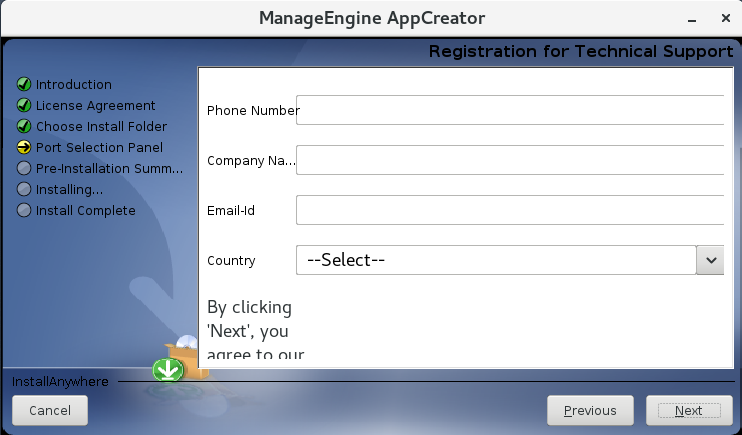
- Review the installation summary, then click Install.
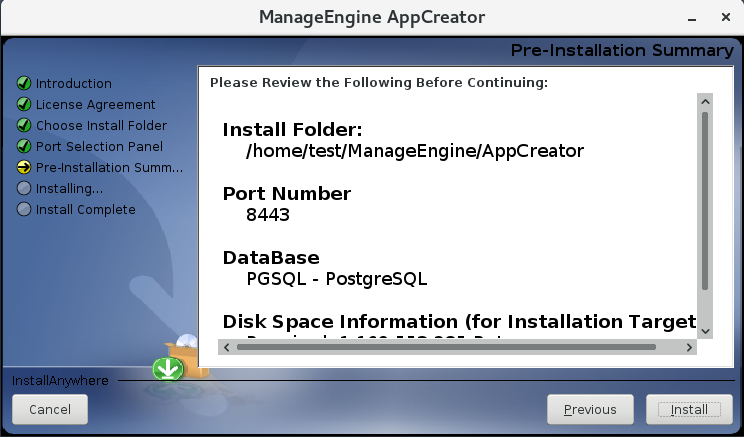
- Click Done.
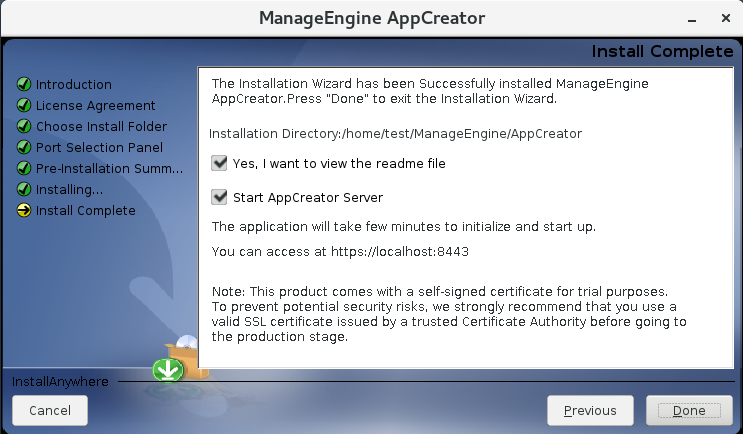
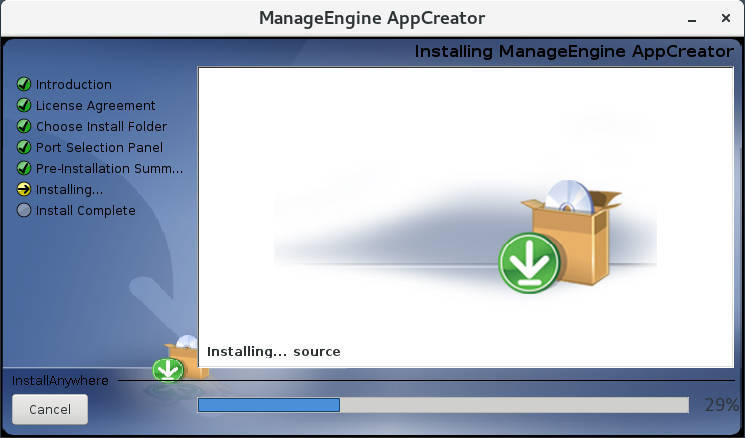
- Once the service starts successfully, the AppCreator login page will open in a browser window. You can log in using the default username/password combination: admin/admin, or admin and the AWS instance ID if you're using AWS. These credentials should be changed after your first login.
- Alternatively, you can start the ManageEngine AppCreator server by following the steps in this page.
After successful installation, we recommend you configure the mail server settings for your account.
Install ManageEngine AppCreator on Linux via console
- Download the required installable for Linux.
- Update the installation file's permission using the following command:
chmod a+x ManageEngine_AppCreator.bin
- Execute the installation file using the following command:
./ManageEngine_AppCreator.bin -i console
- Carefully read and accept the license agreement.
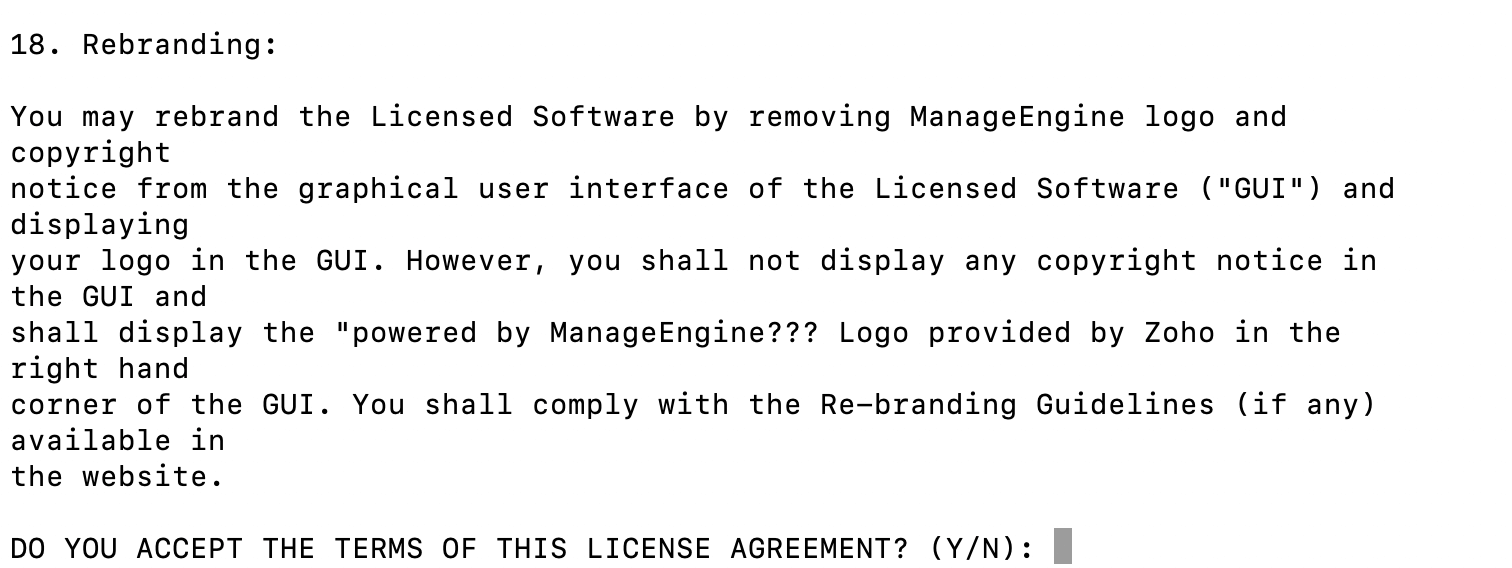
- Set the installation folder, then confirm it. You may either proceed with the default folder or enter the absolute path of the required folder.
Note: The chosen folder must be empty.
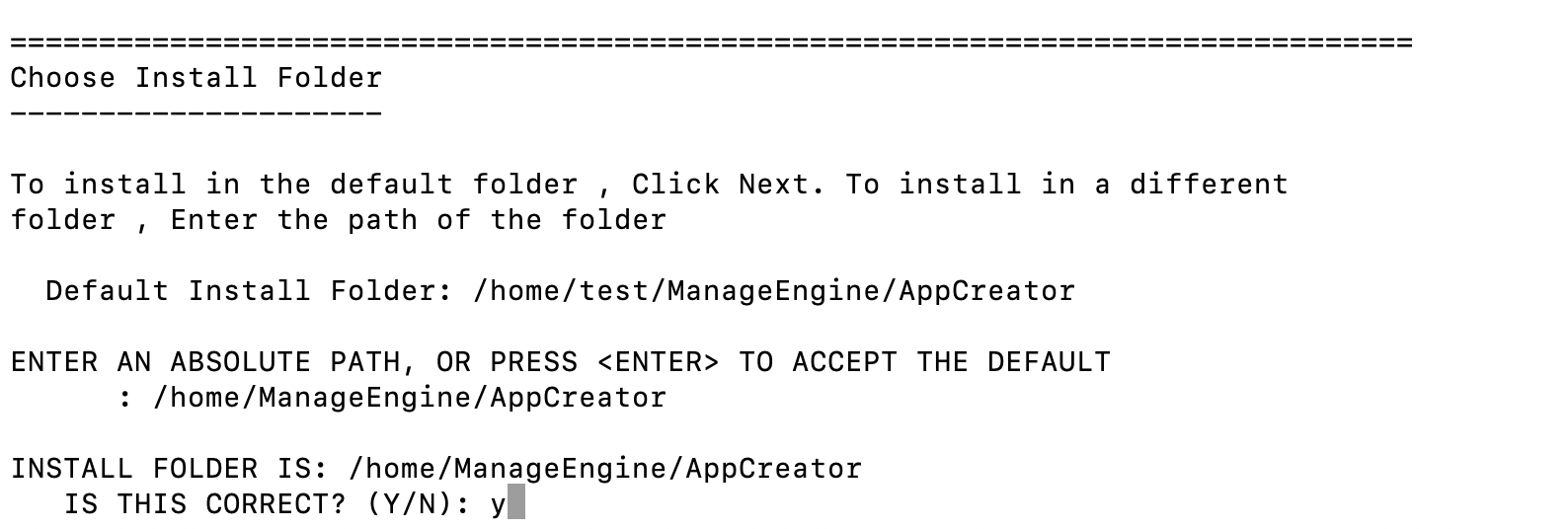
- Set the web server port, then confirm it. You may either proceed with the default port (8443) or enter the required port. Please ensure that the port you set is not used by any other application.

- Review the installation summary, then press Enter to continue (and exit the installer).
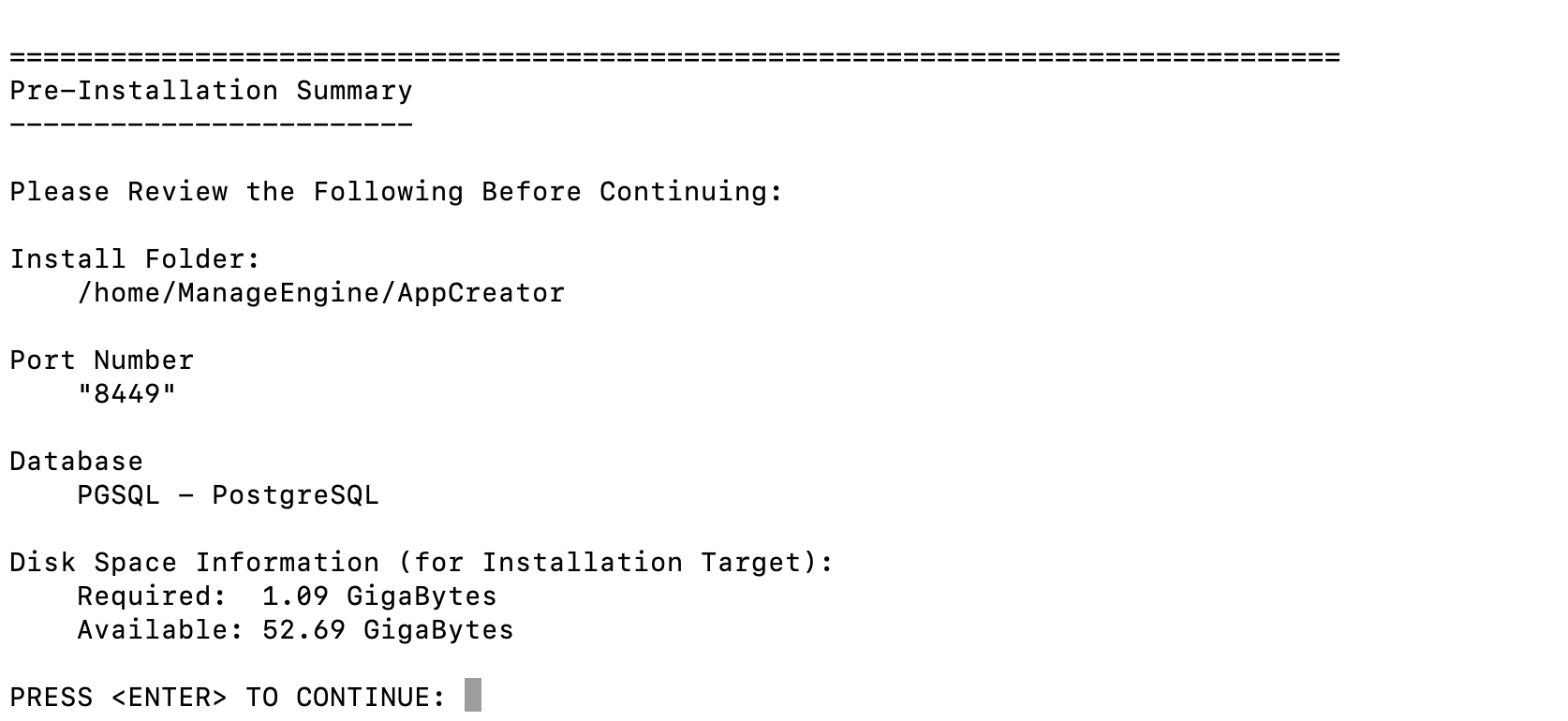
- Upon successful installation, you'll see the host where you can access ManageEngine AppCreator. Also, you'll see prompts to start the server and to view the readme file after the installation is completed.
- After choosing to start the server, the ManageEngine AppCreator login page will open in a browser window where you can login using the default username/password combination of admin/admin. These credentials must be changed after your first login.
- Alternatively, you can start the ManageEngine AppCreator server by using the commands in this page.
After successful installation, we recommend you configure the mail server settings for your account.
